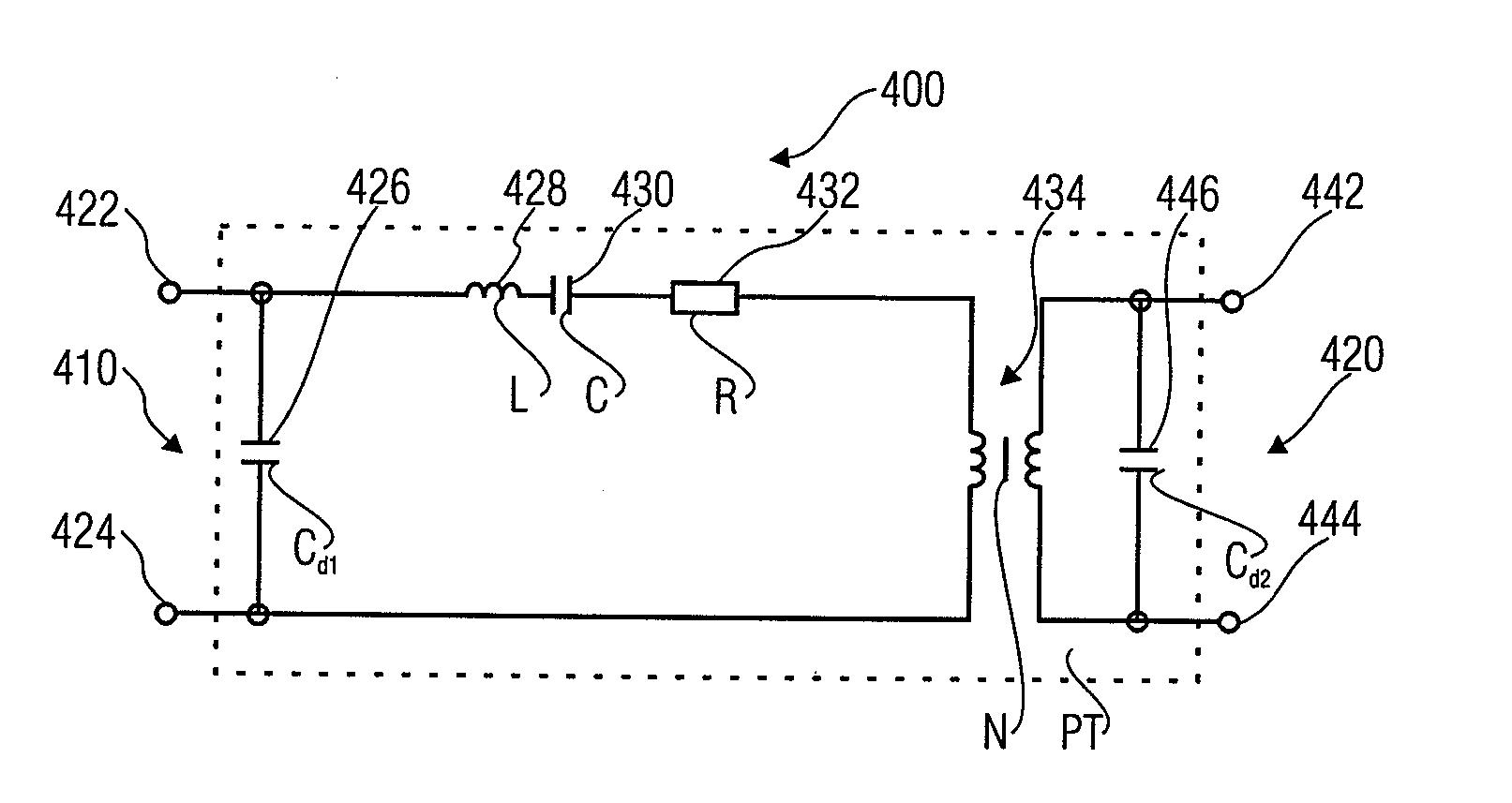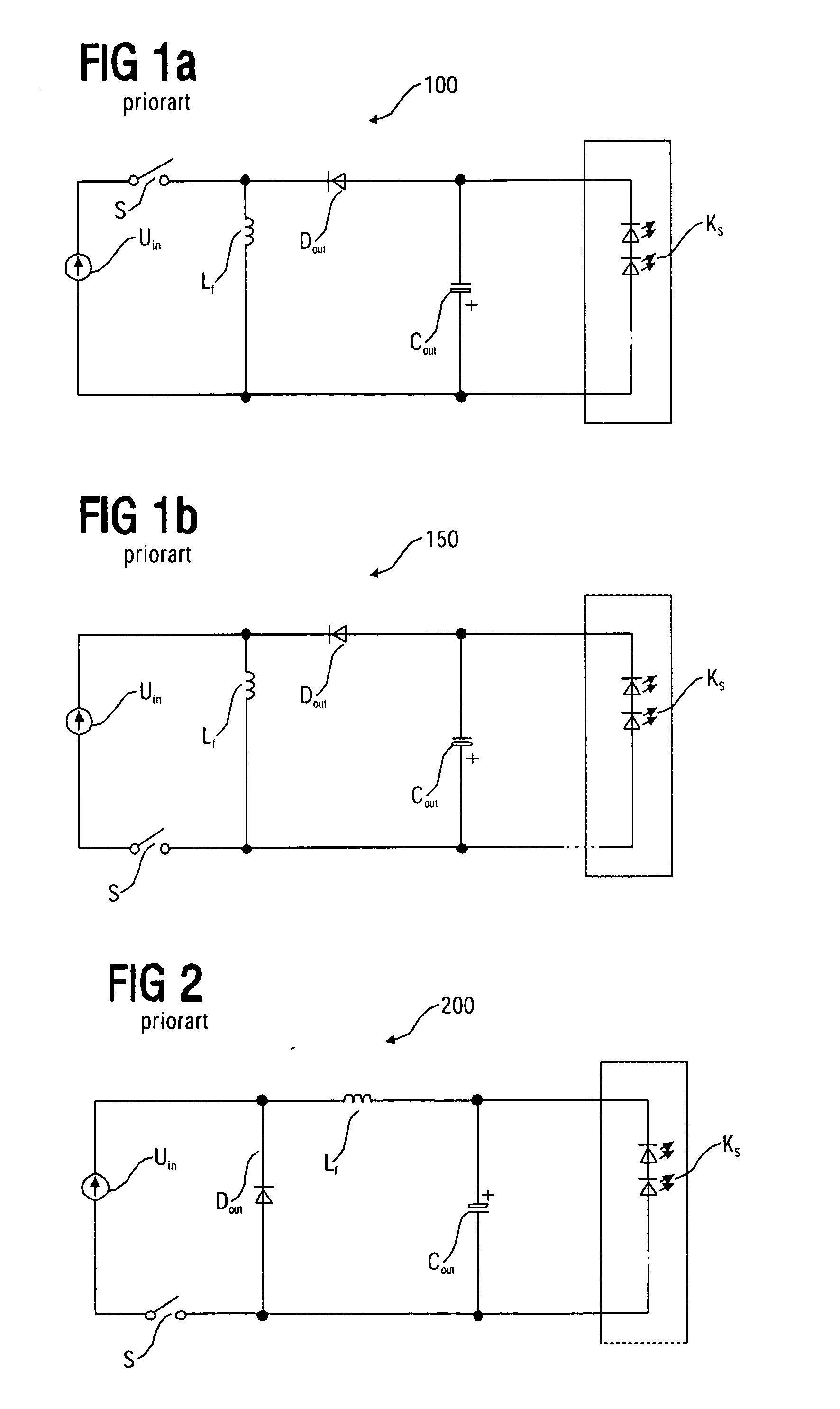Circuitry for supplying a load with an output current
a technology of output current and circuitry, which is applied in the direction of electric variable regulation, process and machine control, instruments, etc., can solve the problems disadvantage of comparatively high power dissipation, and change in current flowing through the load, so as to achieve efficient and interference-free operation of the load
- Summary
- Abstract
- Description
- Claims
- Application Information
AI Technical Summary
Benefits of technology
Problems solved by technology
Method used
Image
Examples
Embodiment Construction
[0056]FIG. 4 shows an equivalent circuit diagram of a piezo transformer for usage in an inventive circuitry. The piezo transformer according to FIG. 4 is designated by 400 in its entirety. The piezo transformer 400 (in the following also designated as piezo trafo) comprises an input 410 and an output 420, which can be, for example, galvanically separated (but not necessarily have to be so). The input 410 has two input terminals 422, 424. An input capacitance 426, which is also designated by Cd1, is connected between the first input terminal 422 and the second input terminal 424. Further, the piezo transformer 400 has a series resonant circuit, consisting of an inductance 428 (also designated by L), a capacitance 430 (also designated by C) and a resistor 432 (also designated by R). The series resonant circuit 428, 430, 432 (RLC) is connected in series to an input of a transformer 434 between the first input terminal 422 and the second input terminal 424, as can be seen from FIG. 4. A...
PUM
 Login to View More
Login to View More Abstract
Description
Claims
Application Information
 Login to View More
Login to View More - R&D
- Intellectual Property
- Life Sciences
- Materials
- Tech Scout
- Unparalleled Data Quality
- Higher Quality Content
- 60% Fewer Hallucinations
Browse by: Latest US Patents, China's latest patents, Technical Efficacy Thesaurus, Application Domain, Technology Topic, Popular Technical Reports.
© 2025 PatSnap. All rights reserved.Legal|Privacy policy|Modern Slavery Act Transparency Statement|Sitemap|About US| Contact US: help@patsnap.com



